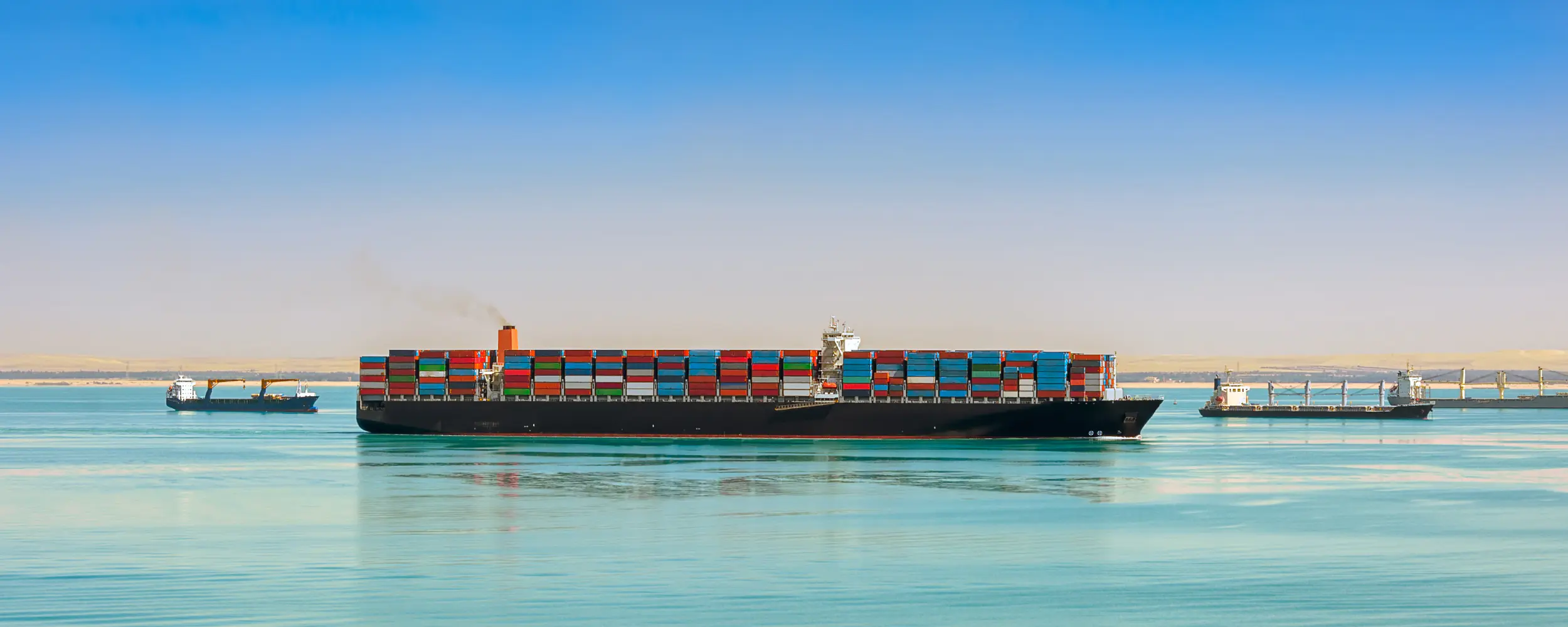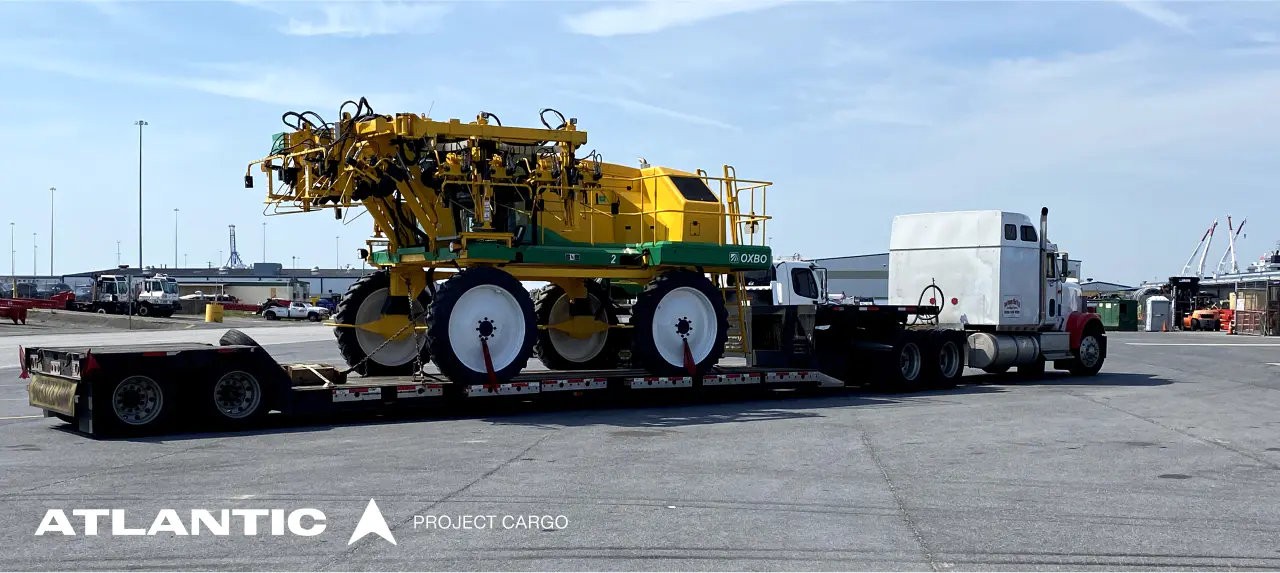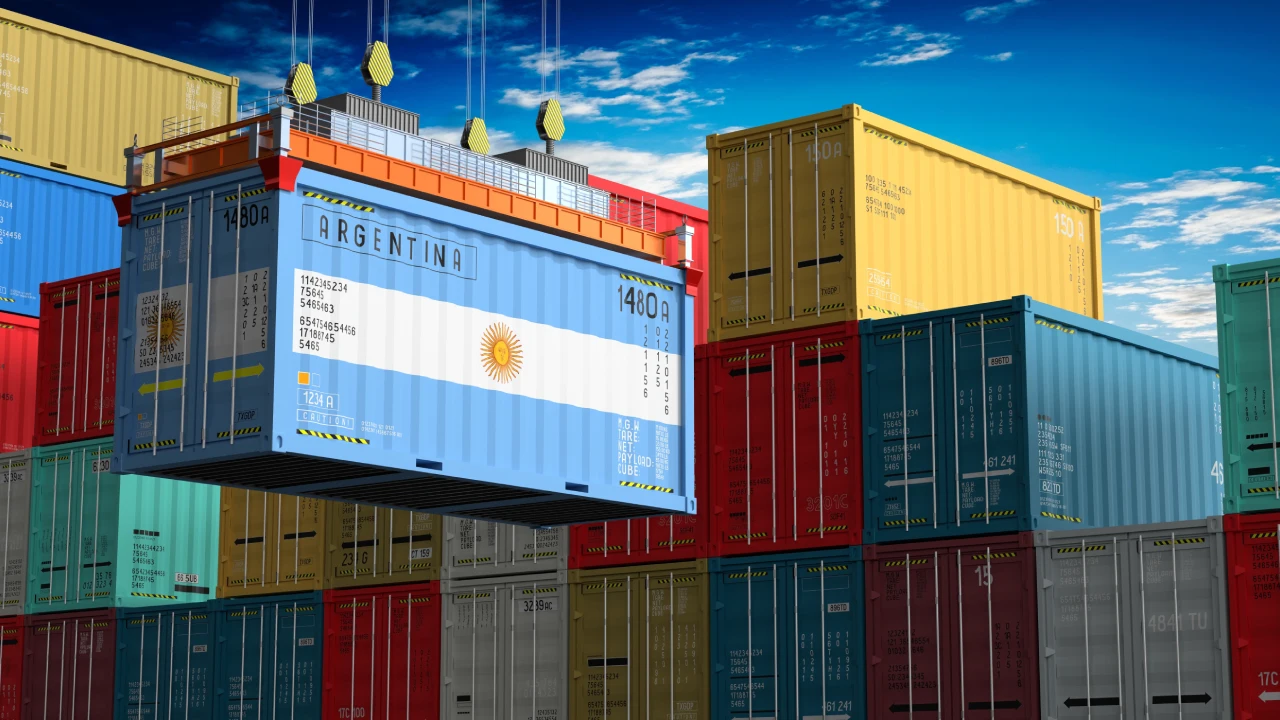
The agricultural sector is vital for every country. It is a foundation of economics and a sphere that feeds the population. According to the UN “The Sustainable Development Goals Report 2023”, with the current levels of development of agriculture, there will be 600 million people who will face hunger in 2030.
Today, the development of agriculture is crucial for most countries. Atlantic Project Cargo understands that, and we provide a large variety of services from transporting agricultural equipment to shipping perishable products worldwide.
In this article, we will have a look at countries with developing agricultural sector and have a look at their e needs.
Get Your Free Quote Today!
South Africa
South Africa’s agricultural sector plays a vital role in the nation’s economy and food security. It employs over a million people, contributes significantly to exports, and sustains millions more through rural livelihoods However, the sector faces numerous challenges, and its development is crucial for the country’s future prosperity.
Key Numbers
- Contribution to GDP
Approximately 2.83% (as of 2023) - Employment
Over 1 million people directly employed - Exports
$12 billion in agricultural products in 2021 - Land
South Africa is Top 1 in terms of land resources, boasting nearly 96 million hectares dedicated to agriculture – the largest amount on the African continent - Water scarcity
A major constraint, particularly for small-scale farmers
Equipment Needs
- Modernization of aging machinery with precision farming technologies
- Irrigation systems that will allow efficient water management solutions for dryland regions
- Tractors and other mechanized equipment will improve efficiency and productivity
- Post-harvest handling and storage will reduce food losses and waste
- Livestock equipment will improve animal welfare and production
Import Growth
The import of agri equipment has grown significantly in the last 10 years, with an average annual increase of 5-7%.
Challenges of Shipping Agricultural Equipment to South Africa
While the country presents a promising market for agricultural machinery,shipping farm equipment to South Africacomes with its own set of challenges. Strict biosecurity regulations necessitate thorough cleaning and documentation to prevent the spread of pests and diseases. Additionally, South Africa’s diverse topography can demand specialized transport solutions for oversized or fragile equipment, navigating winding roads and remote locations. Finally, fluctuating exchange rates and potential customs delays require careful planning and budgeting to ensure smooth and cost-effective delivery.
Mexico
Mexico has a strong agricultural sector, ranking as the 13th largest agricultural exporter globally. However, the country still has significant challenges.
Key Numbers
- Contribution to GDP
3.6% (2023) - Employment
12% of the workforce (2023) - Exports
$46.6 billion in 2022 (75% to the US) - Land ownership
70% held by small-scale farmers (<5 hectares) - Water scarcity
A major concern, impacting productivity and sustainability
Equipment Needs
- Modernization and upgrading aging machinery (particularly small-scale farms)
- Water management technologies for efficient irrigation and drought resistance
- Precision agriculture tools for data-driven decision making and resource optimization
- Post-harvest handling & storage that will reduce food losses through proper infrastructure and techniques
- Livestock equipment that will contribute in animal welfare and production efficiency
Import Growth
Over the past 10 years,agricultural equipment importshave seen a steady increase of 3-5% annually.
Challenges of Shipping Agricultural Equipment to Mexico
Japan
Despite being a technological powerhouse, Japan’s agri sector faces distinct challenges in the 21st century. Let’s explore its current state, equipment needs, and machinery import trends.
Key Numbers
- Contribution to GDP
1.2% (2022) - Employment
2.7% of the workforce (2022) – declining rapidly - Self-sufficiency rate
39% (2020) – aiming for 45% by 2030 - Exports
$5.9 billion in 2022 - Average farm size
2 hectares (smallest in the developed world) - Aging population
70% of farmers are over 60
Equipment Needs
- Labor-saving technologies that are addressing the aging workforce and attracting younger farmers
- Precision agriculture for optimizing resource use and maximizing yields on small landholdings
- Smart greenhouses with controlled environments for year-round, high-quality produce
- Robotics and automation that will reduce manual labor and increase productivity
Import Growth
Agricultural machinery imports have grown steadily in the last 10 years, by 2-4% annually.
Challenges of Shipping Agricultural Equipment to Japan
Shipping agricultural machinery to Japanrequires navigating a maze of challenges. Strict biosecurity measures demand careful cleaning and documentation, while voltage differences necessitate adaptations for safe operation. Language barriers and cultural nuances can lead to misunderstandings and delays, while complex regulations and limited port access add further hurdles. Careful planning,experienced partners, and thorough preparation are key to overcoming these obstacles and ensuring a smooth delivery.
Australia
Australia’s broad landscapes make its agricultural sector a vital economic pillar.
Key Numbers
- Contribution to GDP
2.4% (2022) - Exports
$79.9 billion in 2023 - Employment
304,100 directly employed (2023) - Land use
62% dedicated to agriculture - Climate
Varied and vulnerable to droughts, impacting productivity
Equipment Needs
- Precision agriculture for optimizing resource use for water scarcity and variable conditions
- Autonomous technologies like drones and robots for data collection, spraying, and livestock management
- Sustainable solutions like machinery that minimizes environmental impact and fosters soil health
- Post-harvest handling that will reduce food waste through better storage and processing facilities
- Robotics for harvesting that will address labor shortages and improve efficiency
Import Growth
Agri machinery imports have seen a significant increase in the last 10 years, with an average annual increase of 7-9%.
Challenges of Shipping Agricultural Equipment to Australia
Sending agricultural machinery to Australiais a complex task. Strict biosecurity measures demand thorough cleaning and documentation to prevent biohazards, while Australia’s long distances and diverse terrain can require specialized transport for oversized or fragile equipment. Additionally, fluctuating exchange rates and potential delays due to customs inspections necessitate careful planning and budgeting to avoid surprises.
Peru
Peru’s agricultural sector has diverse landscapes, contributing significantly to its economy and food security.
Key Numbers
- Contribution to GDP
7.8% (2022) - Employment
4.1 million directly and indirectly employed (2022) - Exports
$10.5 billion in 2023, showcasing diverse offerings like coffee, asparagus, and quinoa - Land distribution
Uneven, with small-scale farmers constituting the majority but controlling less land - Water scarcity
A major concern, particularly affecting coastal regions and small-scale farms
Equipment Needs
- Upgrading aging machinery to improve efficiency and productivity
- Addressing water scarcity through efficient water management solutions
- Minimizing food losses through proper infrastructure and techniques
- Tailored solutions for affordability and efficient land use
- Adapting to climate change and promoting sustainable practices
Import Growth
Agricultural machinery imports have seen a steady increase in the last 10 years, with an average annual growth of 6-8%.
Challenges of Shipping Agricultural Equipment to Peru
Agricultural machinery freight to Peruinvolves navigating several hurdles. Strict biosecurity measures require cleaning and documentation. Peru’s terrain, from mountains to deserts, can demand specialized transport for oversized equipment, adding complexity and cost. Additionally, bureaucratic procedures and potential customs delays require careful planning and flexibility to ensure timely delivery and avoid unexpected expenses.
Argentina
Argentina’s lands have long been synonymous with agri bounty, making the sector a cornerstone of its economy.
Key Numbers
- Contribution to GDP
6.64% (2023) - Exports
$19.1 billion in 2023, a 50% drop from 2022 - Employment
3.7 million directly and indirectly employed (2022) - Land use
45% dedicated to agriculture, with focus on soybeans, maize, and wheat - Challenges
Droughts, infrastructure limitations, and fluctuating economic policies
Equipment Needs
- Optimizing resource use and data-driven decision-making for efficiency and sustainability by using precision agriculture
- Minimizing food losses through improved infrastructure and logistics of post-harvest handling & storage
- Modern solutions for animal welfare, disease management, and traceability
- Addressing water scarcity through efficient water management technologies and use of irrigation systems
- Affordable and accessible smaller farm equipment for a large number of small-scale farmers
Import Growth
Agricultural machinery imports have seen significant growth in the last 10 years, with an average annual increase of 8-10%.
Challenges of Shipping Agricultural Equipment to Argentina
Shipping agricultural equipment to Argentinapresents distinct challenges. Firstly, navigating complex and sometimes unpredictable import regulations can lead to delays and frustrations. Secondly, Argentina’s huge and diverse geography, with mountains, plains, and coastal regions, requires specialized transport solutions for oversized or fragile equipment, adding logistical complexity and cost. Finally, fluctuating exchange rates (the Argentinian peso has plunged 875% to the dollar from 2019 to 2024) and potential economic instability require careful financial planning and flexibility to manage unexpected costs and ensure smooth transactions.
New Zealand
New Zealand’s agri sector is known for its sustainability and high-quality exports.
Key Numbers
- Contribution to GDP
7.9% (2022) - Exports
$57.4 billion in agricultural products (2023), dominating the national export market - Employment
115.600 people in 2023 - Land use
50% dedicated to agriculture, primarily livestock (dairy, sheep) and horticulture (kiwi, apples) - Challenges
Labor shortages, biosecurity threats, and volatile global markets
Equipment Needs
- Optimizing resource use for efficient water management and maximizing yields with precision agriculture
- Addressing labor challenges, improving efficiency, and reducing reliance on manual work by using robotics and automation
- Technologies for reduced emissions, carbon sequestration, and soil health improvement
- Precision feeding, automated milking, and advanced animal welfare technologies that are part of livestock management systems
- Minimizing food waste through advanced sorting, packing, and cold-chain logistics
Import Growth
Agricultural machinery imports have seen a steady increase in the last 10 years, with an average annual growth of 3-5%.
Challenges of Shipping Agricultural Equipment to New Zealand
Transporting farm equipment to New Zealandinvolves navigating a unique set of hurdles. Strict biosecurity measures demand cleaning and documentation, often requiring specific treatments and certifications. Additionally, New Zealand’s challenging island geography, with limited port access and roads, can necessitate specialized transport solutions for oversized equipment, impacting cost and planning. Finally, fluctuations in global shipping rates and potential delays due to remote island locations require careful budgeting and planning to ensure smooth and cost-effective delivery.
Serbia
Serbia has fertile lands and a strong agricultural tradition, contributing significantly to its economy and food security.
Key Numbers
- Contribution to GDP
9.4% (2022) - Employment
14.5% of the workforce (2022) - Exports
$4.1 billion in agricultural products (2023), with corn, fruits, and vegetables playing a major role - Land ownership
Dominated by small-scale farms (under 5 hectares) - Challenges
Land fragmentation, limited access to finance, and aging infrastructure
Equipment Needs
- Upgrading and modernization of aging machinery to improve efficiency and productivity
- Optimizing resource use (water, fertilizers) for cost-effectiveness and sustainability with means of precision agriculture
- Minimizing food losses through improved infrastructure and techniques
- Affordable and accessible small-scale farm equipment for the majority of Serbian farmers
Import Growth
Agricultural machinery imports have seen a steady increase in the last 10 years, with an average annual growth of 4-6%.
Challenges of Shipping Agricultural Equipment to Serbia
Delivering agricultural machinery to Serbiahas several key concerns that demand attention:
- Biosecurity
- Landlocked Location
- Infrastructure Limitations
- Customs Clearance
- Financing Challenges
By carefully considering these main concerns, potential challenges can be mitigated.
Canada
Canada’s huge farmlands and diverse climate are good for the agricultural sector. They play a major role in its economy and global food security.
Key Numbers
- Contribution to GDP
7.0% (2022) - Exports
$92.8 billion in agricultural and food products (2022) - Employment
2.3 million directly and indirectly employed (2022) - Land use
17% dedicated to agriculture, with grains, oilseeds, and livestock prominent - Challenges
Labor shortages, climate change impacts, and geopolitical uncertainties
Equipment Needs
- Addressing labor shortages, improving efficiency, and reducing reliance on manual work with automation and robotics
- Adapting to extreme weather events and mitigating environmental impact with climate-smart technologies
- Minimizing food waste through advanced storage and logistics solutions
- Precision feeding, automated milking, and advanced animal welfare technologies
Import Growth
Agricultural machinery imports have seen consistent growth in the last 10 years, rising by 5-7% annually.
Challenges of Shipping Agricultural Equipment to Canada
Shipping agricultural machinery to Canada comes with its own set of challenges:
- Climate & Geography
- Strict Border Regulations
- Remote Locations & Infrastructure
- Fluctuating Exchange Rates & Import Duties
- Domestic Regulations & Provincial Variations
By understanding these potential challenges and working withexperienced partners,shipping equipment to Canadacan be stress-free.
Moldova
Moldova has fertile lands and a rich agricultural heritage, contributing significantly to its economy and food security.
Key Numbers
- Contribution to GDP
14.7% (2022) - Employment
26.8% of the workforce (2022) - Exports
$2.7 billion in agricultural products (2022), with fruits, vegetables, and grains prominent - Land ownership
56% held by small-scale farmers (<5 hectares), posing land consolidation challenges - Challenges
Land fragmentation, limited financing, outdated infrastructure, and drought vulnerability
Equipment Needs
- Replacing aging machinery with advanced equipment for improved efficiency and productivity
- Addressing drought through efficient water management solutions by using irrigation equipment
- Post-harvest handling & storage
Import Growth
Agricultural machinery imports have seen steady growth in the last 10 years, averaging 5-7% annually.
Challenges of Shipping Agricultural Equipment to Moldova
Shipping agricultural machinery to Moldovapresents several distinct challenges:
- Limited Infrastructure
- Stringent Biosecurity Measures
- Bureaucratic Hurdles & Corruption Concerns
- Financing Limitations
- Language & Cultural Barriers
Overcoming these challenges requires careful planning, collaboration withexperienced partners, and cultural sensitivity.
Conclusion
As we’ve explored, the agricultural sector across various countries has a huge potential, and it is driven by innovation, adaptation, and a shared focus on food security. Each nation faces unique challenges and opportunities, but by addressing issues like land access, water scarcity, and technology adoption, they can make a brighter future for their populations and the global food system.
However, agricultural development requires not just individual efforts but also global collaboration. This is where shipping companies like Atlantic Project Cargo play a crucial role.
Atlantic Project Cargo’s farm equipment shipping services go beyond transportation. We understand the complexities of agricultural development and provide tailored solutions to ensure timely and cost-effective delivery of essential equipment, from specialized machinery to irrigation systems. By connecting farmers with the tools they need, Atlantic Project Cargo becomes a vital partner in unlocking the agri potential of these growing nations.

Read More



